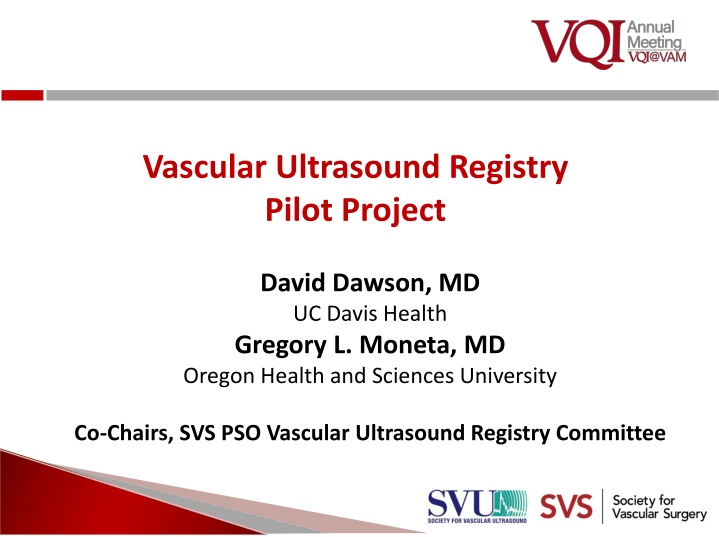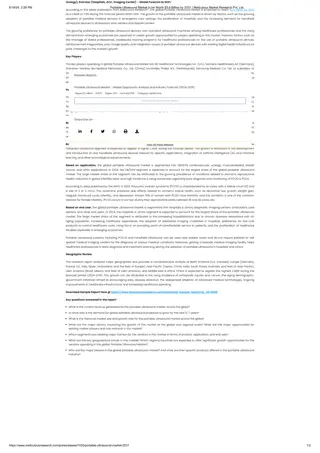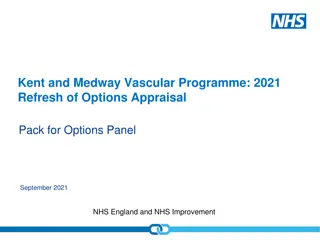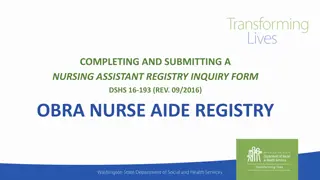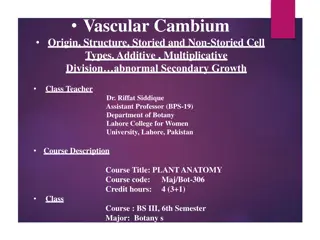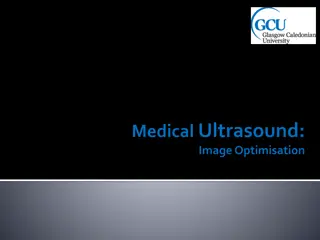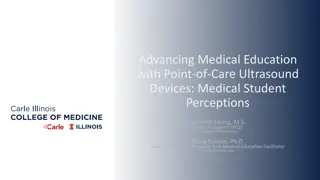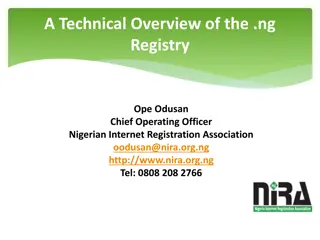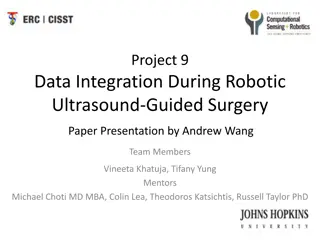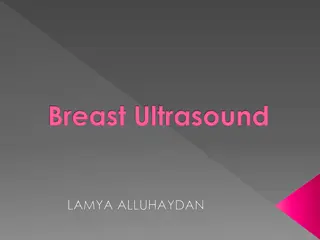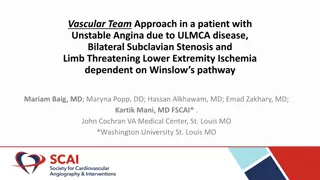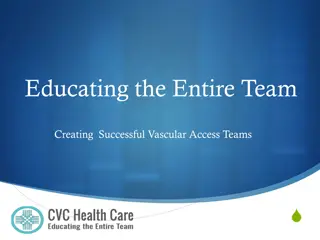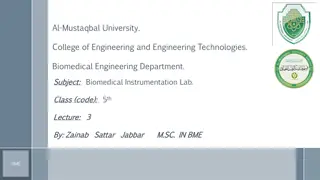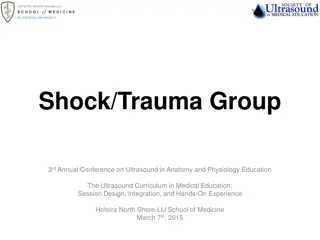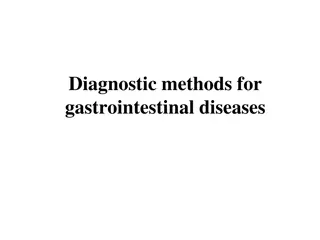Advancing Vascular Ultrasound Through Registry Collaboration
The Vascular Ultrasound Registry Pilot Project, led by Dr. David Dawson and Dr. Gregory L. Moneta, aims to enhance research, education, and quality in vascular ultrasound. This initiative involves a formal collaboration between SVS PSO, SVU, and M2S/Medstreaming to integrate images and data into clinical registries. The history, initial steps, and goals of the pilot project demonstrate a concerted effort to improve vascular laboratory data collection and analysis, especially focusing on carotid artery disease diagnosis and treatment.
Download Presentation

Please find below an Image/Link to download the presentation.
The content on the website is provided AS IS for your information and personal use only. It may not be sold, licensed, or shared on other websites without obtaining consent from the author.If you encounter any issues during the download, it is possible that the publisher has removed the file from their server.
You are allowed to download the files provided on this website for personal or commercial use, subject to the condition that they are used lawfully. All files are the property of their respective owners.
The content on the website is provided AS IS for your information and personal use only. It may not be sold, licensed, or shared on other websites without obtaining consent from the author.
E N D
Presentation Transcript
Vascular Ultrasound Registry Pilot Project David Dawson, MD UC Davis Health Gregory L. Moneta, MD Oregon Health and Sciences University Co-Chairs, SVS PSO Vascular Ultrasound Registry Committee
Vascular Ultrasound Registry New initiative announced January 16, 2018
Registry Collaboration Formal collaboration between the SVS PSO, Society for Vascular Ultrasound (SVU) and M2S/Medstreaming Shared interest to pursue a novel approach to incorporate images and structured data into clinical data registries Vendor neutral tools for direct entry of data and images Unified goal to improve quality, enhance research, develop education content and support advocacy efforts
History Medstreaming customers expressed interest in combining their data to support research Concept evolved into idea of national registry with SVU taking the lead Medstreaming acquired M2S Registry intended to be inclusive of Medstreaming customers and others Concept discussions among leadership of Society for Vascular Ultrasound (SVU) since 2014 SVU established Research Committee chaired by Dr. Douglas Wooster in 2016 SVU Research Committee charged with defining initial project that would serve as foundation of vascular ultrasound registry Society for Vascular Surgery (SVS) recognized as potential partner Necessary "infrastructure" in place: Patient Safety Organization Existing M2S relationship with SVS (through VQI Registry) Discussions led to plan for a Vascular Ultrasound Registry to be part of VQI
Initial Steps Steering Committee Established Co-Chairs Dr. David Dawson (SVU) Dr. Gregory Moneta (SVS) Formalizing Pilot Sites Participation Representatives from contracted pilot sites will serve on the Committee Kickoff Meeting on June 21st On-site training for data transfer
Goal of the Pilot Vascular Ultrasound Registry s initial efforts are focused on proof-of-concept Establish technical means to collect and analyze vascular laboratory data Pilot project focuses on diagnosis and treatment of carotid artery disease Images will be matched with clinical data in the VQI Includes sites participating in CEA and CAS registries Current users of Medstreaming Vascular Information System (VIS)
Digital Imaging and Communication in Medicine DICOM is both an image format and network protocol Allows interoperability of imaging and information management systems Standard implementation by manufacturers Image data in processed and unprocessed formats Metadata about the patient, machine, and data acquisition settings
DICOM Structured Reporting DICOM SR is the standard for exchange of structured data and clinical observations (in imaging environment) Structured reporting is an extension of DICOM images Captures measurements, calculations, and other descriptive data in images Data saved in a structured, customizable form Data more accessible compared to traditional text-based reporting
Operation Efficiency: VUR Utilize structured data and reporting capabilities to transfer images to the registry Minimize impact on current workflow processes Minimize or eliminate requirements for additional data entry other steps used in clinical setting: Data acquisition by vascular lab technologist (examination) Image and data review, reporting (technologist/interpreting physician)
Workflow Examination performed by RVT Participating site Measurements, calculations, annotations Images, videos Structured Reporting DICOM SR Vascular Information System (VIS) VQI Vascular Ultrasound Registry (VUR)
VUR Pilot Sites Sites expected to be part of the pilot project: 1. 2. Froedert Health System, Dr. CJ Lee Johns Hopkins Bayview Medical Center, Dr. Mahmoud Malas and Alexander Nodel Northside Hospital, Dr. Siddharth Patel Norton Healthcare, Kelly Byrnes Novant Forsyth, Drs. Raymond Workman and Phillip Moore Oregon Health & Science University, Dr. Greg Moneta Partners HealthCare (Mass General), Dr. Javier Romero ProMedica (Jobst Vascular Institute), Dr. Fedor Lurie and Robin Acino Sarasota Memorial Health System, Dr. Russell Sampson 10. Sentara Norfolk General Hospital, Carolyn Strek 3. 4. 5. 6. 7. 8. 9.
Workflow Site 6 Site 5 Site 7 Site 4 Site 8 Site 3 Site 9 Site 2 Site 10 Site 1 VQI Vascular Ultrasound Registry (VUR) DICOM SR data individual examinations from all registry sites is entered into VUR
VUR Initial Goals Establish technical capabilities, build database Identify best practices for standardization of vascular lab data collection Pilot project limited to cerebrovascular examinations Carotid duplex scan are common and relatively standardized Integrate VUR data in VQI to increase the value/capabilities of VQI
Current Activities Use test environment to build VUR Entries from previous carotid examinations in each site s Medstreaming VIR records Working group to define what carotid information will be prospectively entered (standardizing fields, images to be entered, maintaining compliance with IAC standards) Identify variations in standards and procedures at different sites Suggest modifications to achieve standardization and maximum utility, with minimal workflow impact
Next Steps: Direct User Benefits Develop meaningful business analytics Benchmark vascular laboratory performance Meet accreditation and other reporting requirements
Broader Applications within VQI Use objective data from VUR in analysis of data from other VQI modules Validate existing and new vascular testing technologies Conduct clinical trials (e.g. post-approval studies of devices/therapeutics)
Many Potential Study Ideas Image analysis, machine learning, artificial intelligence Vessel wall characterization (IMT) Features of symptomatic vs. asymptomatic plaques Risk prediction modeling Inter-observer and inter-facility variability
Summary Vascular Ultrasound Registry is joint initiative that has engaged SVU with the SVS PSO Leverages existing informatics technologies to facilitate automated data capture Medstreaming/M2S providing key support End product will be vendor neutral First VQI registry to incorporate imaging Can be combined with the comprehensive clinical information gathered in 12 existing VQI registries
